Forty years ago, the voyaging canoe Hokule’a set sail from Hawaii to Tahiti, demonstrating the ancient art of navigation that brought the first settlers to Polynesia across thousands of miles of ocean — and resurrecting an ancient type of vessel not seen for centuries.
On Thursday this week, the Hokule’a and her crew rounded Mason’s Island in Connecticut and arrived at Mystic Seaport, as part of a global voyage with a mission to help save the planet. Next week, the 40-foot double-hulled canoe will arrive in Vineyard Haven for a three-day visit, having traveled three-quarters of the way around the world, leaving from its home port of Honolulu. The Hokule’a arrives Tuesday and leaves Friday.
On Monday this week, author and filmmaker Sam Low sat on his back porch in Harthaven, looking out through a pine grove at the sailboats in Farm Pond, where he spent summers as a boy and got his first taste of maritime adventure. Over the past few months, Mr. Low, who himself sailed on the Hokule’a in the 1980s, has volunteered hundreds of hours in preparing for her arrival on the Vineyard.
After serving stints as an underwater archaeologist and college professor many years ago, Mr. Low’s curiosity about the early Polynesian settlers led to his first independent film, The Navigators: Pathfinders of the Pacific, in 1983, and more recently his book Hawaiki Rising: Hokule’a, Nainoa Thompson, and the Hawaiian Renaissance — both of which document the revival of the Hokule’a and the ancient Hawaiian art of navigation.
“I’m throwing a party for 4,000 people,” Mr. Low said, noting that the Hokule’a crew, including his cousin, Capt. Bruce Blankenfeld, would be staying at his house and around the Farm Pond neighborhood, which he said shared the ‘ohana, or family atmosphere of many places in Hawaii. “When you come into a place like this and drive around it, you know every house and who is living in that house,” he said. “So they will be in an ‘ohana, and they will feel that warmth and that welcome.”
The Hokule’a left Hawaii more than two years ago, heading west across the Pacific and Indian oceans, with stops including New Zealand, Australia, Bali, South Africa, Brazil and the Virgin Islands. Beginning in April, it began its slow journey up the East Coast of the United States, stopping in the Everglades, Chesapeake Bay, New York City and elsewhere.
Perhaps the most striking aspect of her voyage is that the crew, using the traditional methods, rely only on the stars, wind, waves and movement of birds to set its course. For its global voyage, the Hokule’a is never without a modern vessel in its wake, and carries modern instruments in case of an emergency. But its crew still uses the same methods as their ancestors.

Built in 1975 in the style of the ancient voyagers, the Hokule’a proved that it was possible to get from Hawaii to the south Pacific — against the winds and currents — in a traditional vessel without a compass or any navigational instruments. The ancient method itself was in danger of dying out, with only a handful of navigators in the isolated islands of Micronesia still carrying the knowledge. Master navigator Mau Piailug, who had heard of the efforts to reconstruct the ancient vessel, reached out to share his knowledge.
“He knew that quite possibly he might be the last person to practice this ancient art,” said Mr. Low, who sailed with Mr. Piailug and saw for himself how settling Polynesia could have been possible so long ago. “It changed everything in Hawaii, among the people who sailed these canoes,” he said. “It gave them this great gift of this centuries-old immersion in nature, this knowledge of how to find your way without charts or instruments.”
The early Hawaiian navigators used a system of dead reckoning, estimating their changing position over time. But without maps, they simply kept track in their heads. They relied largely on the rising and setting of stars, along with the pattern of waves and trade winds to stay on course. Even on cloudy nights, they knew their direction from the feel of the waves under their feet.
“Once you have had this opportunity of sailing aboard Hokule’a, you always have her, that canoe, deep in your soul,” Mr. Low said, adding that he felt honored to be a member of the ohana wa’a, or the family of the canoe. “She’s more than just a sailing vessel,” he said. “She’s a deep experience.”
Mr. Low has learned from his involvement with Hokule’a a philosophy that he said applies equally to life and sailing. Myron (Pinky) Thompson, father of Nainoa Thompson (who leads the Polynesian Voyaging Society) taught that sailing as his ancestors did requires having a vision. “You had to have a vision that there was an island out there yet to be discovered over the horizon,” Mr. Low said. “You had to have that vision to draw you to it.” And achieving that goal requires planning, training, discipline, courage — and aloha, the Hawaiian word for love.
As perhaps a token of this philosophy, Mr. Low still doesn’t own a cell phone, but will need to buy one for the visit next week. Just then, a low-flying airplane drowned out the sounds of nature, and Mr. Low waited as it passed over and its shadow flashed across the deck. He continued: “I think for all of us who have sailed on Hokule’a, that her mana, her magic, becomes part of us. There are many things about voyaging, for example, particularly on an ancient vessel . . . that become part of how you live your life.”
When the Hokule’a arrives in Tisbury Wharf next week, members of the Wampanoag Tribe of Gay Head (Aquinnah) will be first to greet her, paddling out in a traditional muhsh8n (pronounced mishoon), or dugout canoe that they created for the occasion. In a sort of kinship with the Hukule’a, the muhsh8n is likely the first in many generations to be carved on the Island.
Organizers of the voyage always seek permission from an area’s first people before visiting their land. Mr. Low’s first task this year in organizing the Island visit was to meet with tribal chairman Tobias Vanderhoop and others, who gladly extended an invitation.
But following their own tradition, the tribe chose not to write a letter or make a phone call, but to send two strands of wampum, which was blessed in Hawaiian waters and will be displayed on canoe’s sails as a greeting on Wednesday. The sounding of a conch will signal the end of the traditional welcome, and the beginning of larger celebrations involving hula dancers, singers, a ukulele group, and a wide variety of events related to the voyage. Students at the Edgartown School will present a gift of food grown in their garden, and a student will deliver an official welcome speech.
The Hokule’a voyage to encourage sustainable living is more about learning than teaching, said Mr. Low, noting the metaphor of a ship setting out from land to bring something back home.
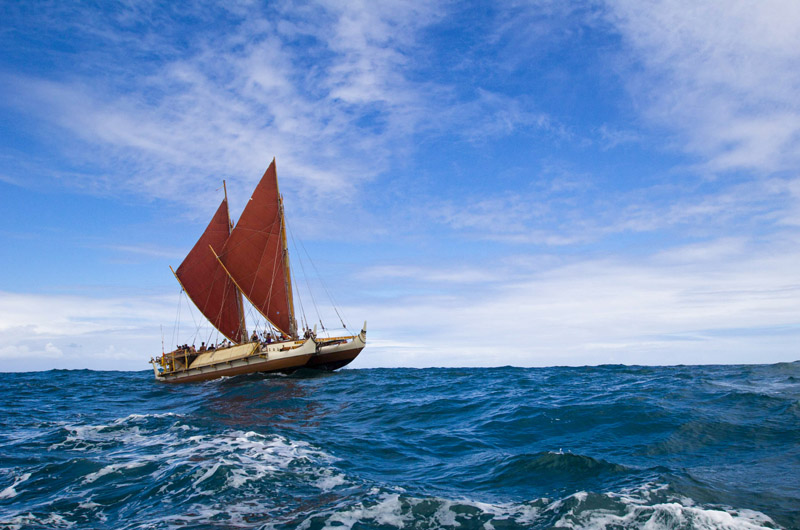
“A navigator always sails in seram, the light, he always sails in goodness, in kindness, in generosity,” he said, recalling the words of Mr. Piailug many years ago. “She’s coming here, and her crew are coming here, to meet with all those people — and there are many on this Island — who are practicing a sustainable lifestyle and who are learning to live within the budget of our natural resources.”
A number of Island groups will host exhibits related to sustainable living on Wednesday and Thursday — including Cottage City Oysters, the Martha’s Vineyard Shellfish Group, Island Grown Initiative, Felix Neck Wildlife Sanctuary, Sassafras Earth Education and BiodiversityWorks. In addition, Hokule’a crew members will demonstrate their methods and share stories from the voyage.
The Hokule’a departs Friday for Woods Hole, followed by several other stops in New England, before turning south and sailing through the Panama Canal, with stops planned for Rapa Nui and Tahiti in the South Pacific, before its final homecoming in Hawaii.
For more information, and daily updates on the voyage of the Hokule’a, visit hokulea.com.

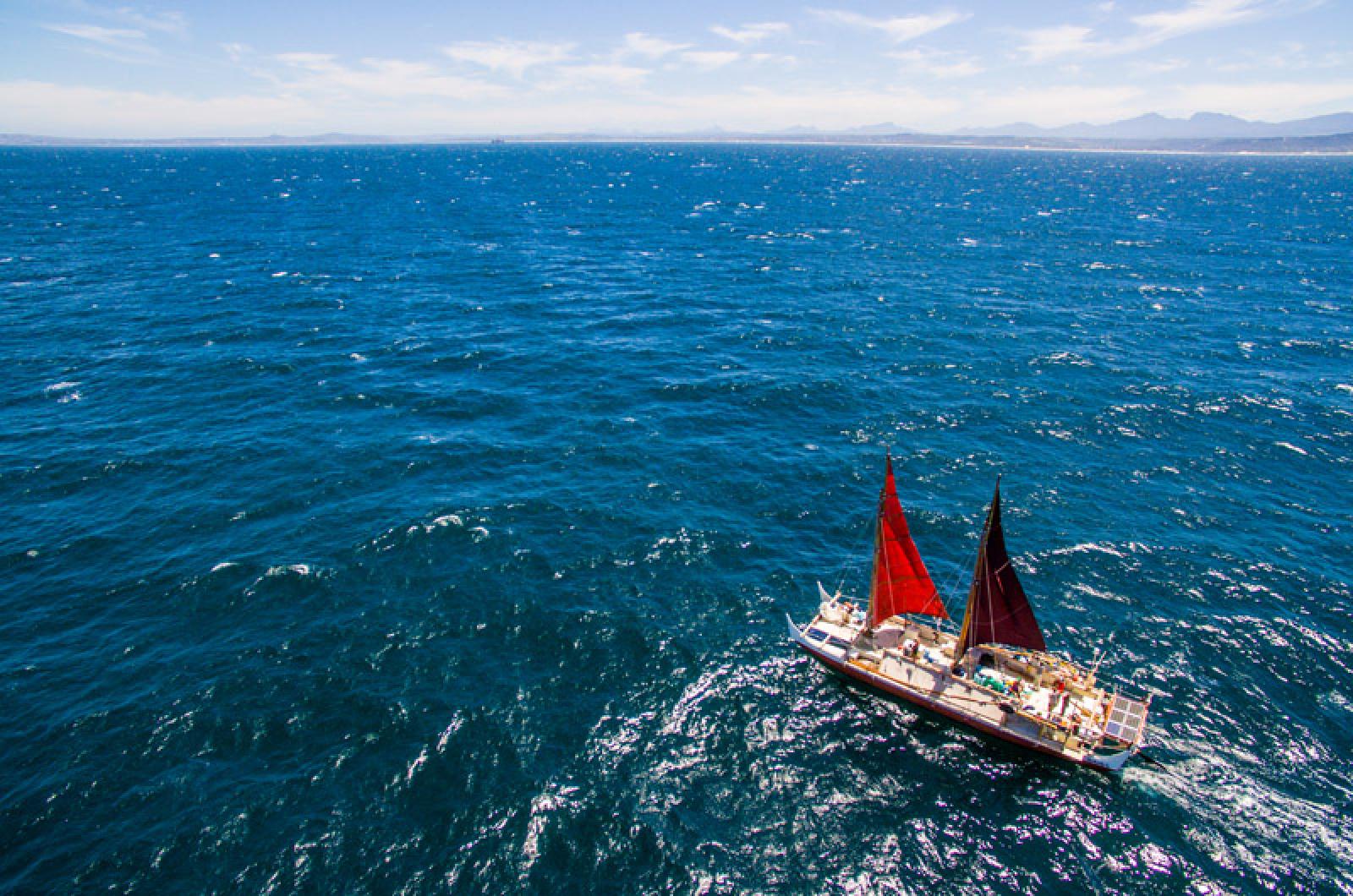
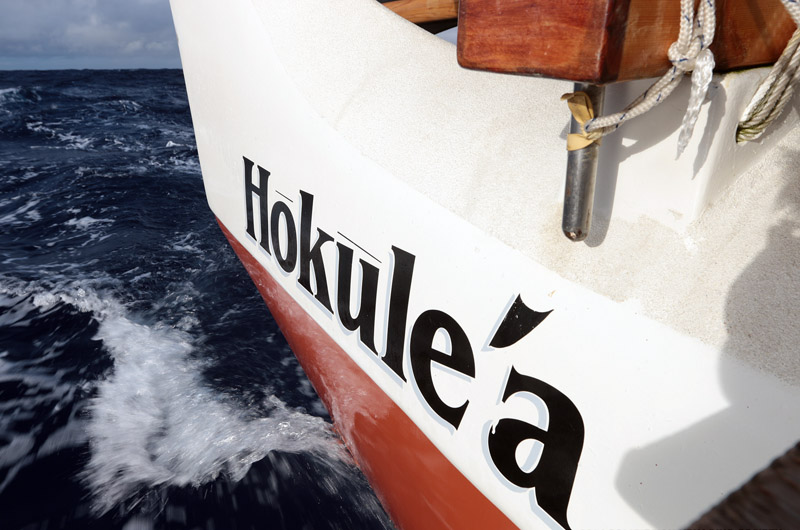
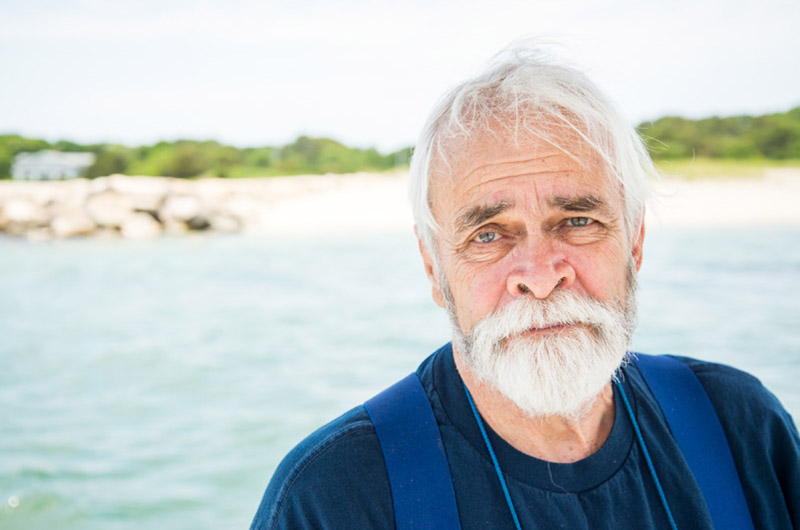
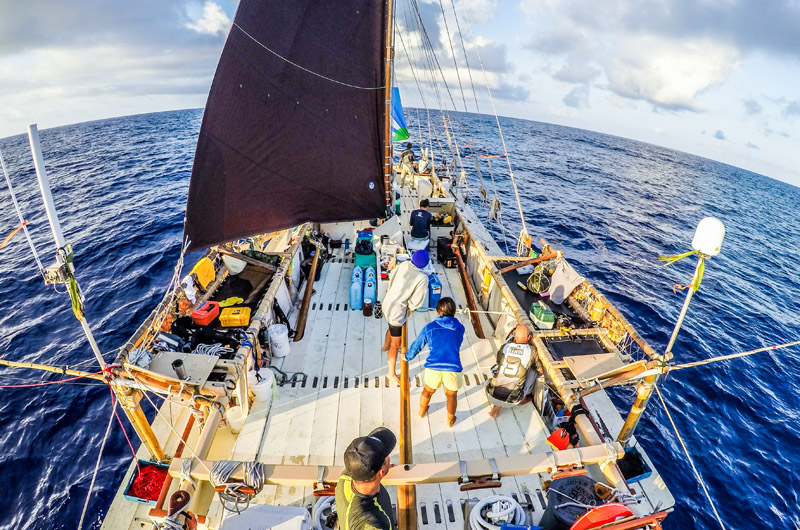
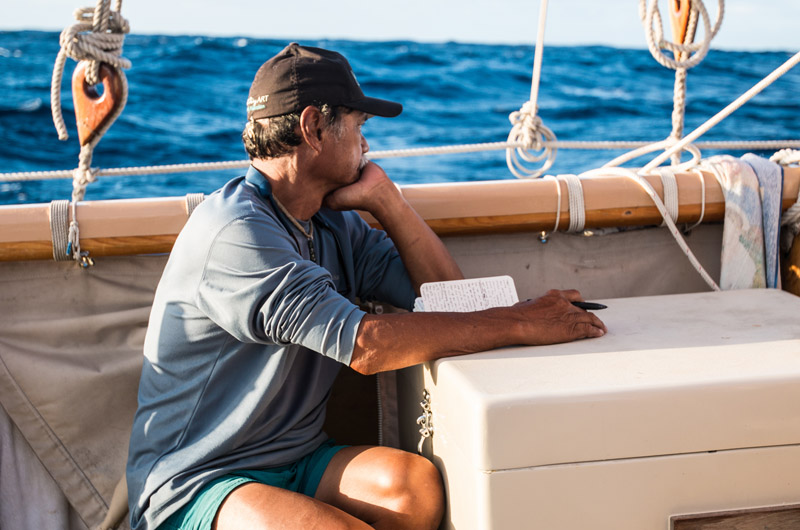





Comments (5)
Comments
Comment policy »